
This video provides tips and tricks for effectively changing behavior.
- Subject:
- Psychology
- Social Science
- Material Type:
- Lesson
- Author:
- LAPU
- Date Added:
- 03/06/2023

This video provides tips and tricks for effectively changing behavior.
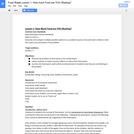
Objectives:
* Illustrate the problem of food waste in the United States.
* Inspire students to make conscious efforts to reduce their food waste.
* Use the mini food waste audit activity to demonstrate to students how they are contributing to the problem
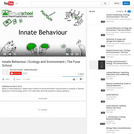
What is 'innate behaviour'? Where does it feature in the environment? And how does it compare to 'learned behaviour? In this Ecology GCSE / K12 video learn all of the answers to these questions.Are you a passionate teacher who would like to reach tens of thousands of learners? Get in touch: vsteam@fusion-universal.comFind out more: http://www.thevirtualschool.comThis video is distributed under a Creative Commons License: Attribution-NonCommercial-NoDerivs CC BY-NC-ND
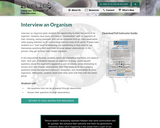
Interview an Organism gives students the opportunity to enter the world of an organism. Students slow down and have a “conversation” with an organism of their choosing, asking questions that can be answered through more observation while paying attention to its surroundings and the scale of its world. It helps take students to a “next level” of observing and questioning as they learn to ask themselves questions that lead them to make deeper observations. In the process, they get to know their chosen organism.
In this Exploration Routine, students search for interesting organisms and observe them. Each pair of students chooses an organism to study, comes up with questions about the organism’s appearance and structures, while attempting to answer each one through observations. Then they move on to more probing questions about the organism’s behavior, ecosystem, and relationships to other organisms. Afterwards, students share with other pairs and then with the whole group.
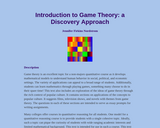
Game theory is an excellent topic for a non-majors quantitative course as it develops mathematical models to understand human behavior in social, political, and economic settings. The variety of applications can appeal to a broad range of students. Additionally, students can learn mathematics through playing games, something many choose to do in their spare time! This text also includes an exploration of the ideas of game theory through the rich context of popular culture. It contains sections on applications of the concepts to popular culture. It suggests films, television shows, and novels with themes from game theory. The questions in each of these sections are intended to serve as essay prompts for writing assignments.

This course surveys questions about human behavior and mental life ranging from how you see to why you fall in love. The great controversies: nature and nurture, free will, consciousness, human differences, self and society. Students are exposed to the range of theoretical perspectives including biological, evolutionary, cognitive, and psychoanalytic. One of the best aspects of Psychology is that you are the subject matter. This makes it possible to do many demonstrations in lecture that allow you to experience the topic under study. Lectures work in tandem with the textbook. The course breaks into small recitations sections to allow discussion, oral presentations, and individual contact with instructors.

Introduction to the study and principles of behavior. Topics include general principles of scientific investigation; physiological bases of behavior including sensation, perception, learning, emotion and motivation; development; individual differences; attitudes and group dynamics.
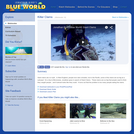
Giant clams are no myth. In New England, people love clam chowder, but in the Pacific, some of the clams are as big as a suitcase! In this video filmed in Micronesia, Jonathan goes in search of Giant Clams. These clams are so big that people used to think they caught people...and it almost looks like they could. It turns out that the real problem is that too many people are eating the clams. Please see the accompanying lesson plan for educational objectives, discussion points and classroom activities.
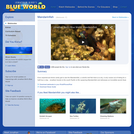
Even experienced divers rarely get to see the Mandarinfish, a colorful reef fish that is so shy, it only comes out of hiding for a half-hour a day. In this video, Jonathan travels to the south Pacific to film spawning Mandarinfish and witnesses an incredible secret ritual. Please see the accompanying study guide for educational objectives and discussion points.
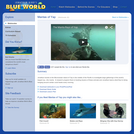
In this video, Jonathan travels to the Micronesian island of Yap in the middle of the Pacific to investigate large gatherings of the world's largest rayŰÓthe manta. A research program there is tracking dozens of these animals and Jonathan learns what they're doing hanging around certain coral heads every morning. Please see the accompanying lesson plan on tides for educational objectives, discussion points and classroom activities.
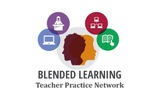
In this problem-based learning module, students will examine various forms of media and the ways that it can influence personal and social behavior. They first will work in stations to examine different types of media and explore what that media is while also addressing how it makes them feel. Afterward, they will work in small groups to create their own influential piece of media which communicates a problem they feel is facing their school.
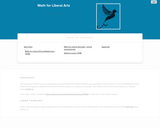
This course was originally developed for the Open Course Library project. The text used is Math in Society, edited by David Lippman, Pierce College Ft Steilacoom. Development of this book was supported, in part, by the Transition Math Project and the Open Course Library Project. Topics covered in the course include problem solving, voting theory, graph theory, growth models, finance, data collection and description, and probability.

This course will consider the degree and nature of the modular organization of the mind and brain. We will focus in detail on the domains of objects, number, places, and people, drawing on evidence from behavioral studies in human infants, children, normal adults, neurological patients, and animals, as well as from studies using neural measures such as functional brain imaging and ERPs. With these domains as examples, we will address broader questions about the role of domain-general and domain-specific processing systems in mature human performance, the innateness vs. plasticity of encapsulated cognitive systems, the nature of the evidence for such systems, and the processes by which people link information flexibly across domains.
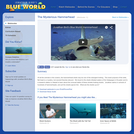
Of all the animals in the oceans, the hammerhead shark may be one of the strangest looking. The exact purpose of the wide, flat head is a mystery, but several theories abound. In this video, we travel to the shark-infested waters of the Galapagos in Ecuador and to a research station in Hawaii to learn about the unusual habits of these sinister-looking sharks. Jonathan swims in schools of hundreds of hammerheads, and yet the sharks ignore him. What are the sharks up to? Please see the accompanying study guide for educational objectives and discussion points.

This lesson plan centers around the video Shatir Shatir by Nancy Ajram. There are translation of the phrases in the song, which asks, “What do you call the one who listens to his parents?” and other similar questions, revealing the traits which could earn an Arab child the title of “Shatir” (smart). It includes things like “never tells a lie” and “eats without getting his clothes dirty.” These are great insights into values that Arabs hold dear, and behavioral expectations for children. Nancy Ajram is a popular Lebanese singer whose music is enjoyed across the Middle East and North Africa, as well as in the United States.
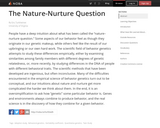
People have a deep intuition about what has been called the “nature–nurture question.” Some aspects of our behavior feel as though they originate in our genetic makeup, while others feel like the result of our upbringing or our own hard work. The scientific field of behavior genetics attempts to study these differences empirically, either by examining similarities among family members with different degrees of genetic relatedness, or, more recently, by studying differences in the DNA of people with different behavioral traits. The scientific methods that have been developed are ingenious, but often inconclusive. Many of the difficulties encountered in the empirical science of behavior genetics turn out to be conceptual, and our intuitions about nature and nurture get more complicated the harder we think about them. In the end, it is an oversimplification to ask how “genetic” some particular behavior is. Genes and environments always combine to produce behavior, and the real science is in the discovery of how they combine for a given behavior.

Roles of neural plasticity in learning and memory and in development of invertebrates and mammals. An in-depth critical analysis of current literature of molecular, cellular, genetic, electrophysiological, and behavioral studies. Discussion of original papers supplemented by introductory lectures.
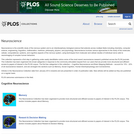
Neuroscience is the scientific study of the nervous system and is an interdisciplinary biological science that extends across multiple fields including chemistry, computer science, engineering, linguistics, mathematics, medicine, philosophy, physics, and psychology. Neuroscience involves various approaches to the study of the molecular, cellular, computational, systems, and cognitive aspects of the nervous system, using techniques from molecular and cellular studies of individual nerve cells to neuroimaging of complex human behaviors.

This course explores the social relevance of neuroscience, considering how emerging areas of brain research at once reflect and reshape social attitudes and agendas. Topics include brain imaging and popular media; neuroscience of empathy, trust, and moral reasoning; new fields of neuroeconomics and neuromarketing; ethical implications of neurotechnologies such as cognitive enhancement pharmaceuticals; neuroscience in the courtroom; and neuroscientific recasting of social problems such as addiction and violence. Guest lectures by neuroscientists, class discussion, and weekly readings in neuroscience, popular media, and science studies.
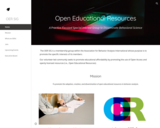
The OER SIG is a membership group within the Association for Behavior Analysis International whose purpose is to promote the specific interests of its members.
Our volunteer-led community seeks to promote educational affordability by promoting the use of Open Access and openly licensed resources